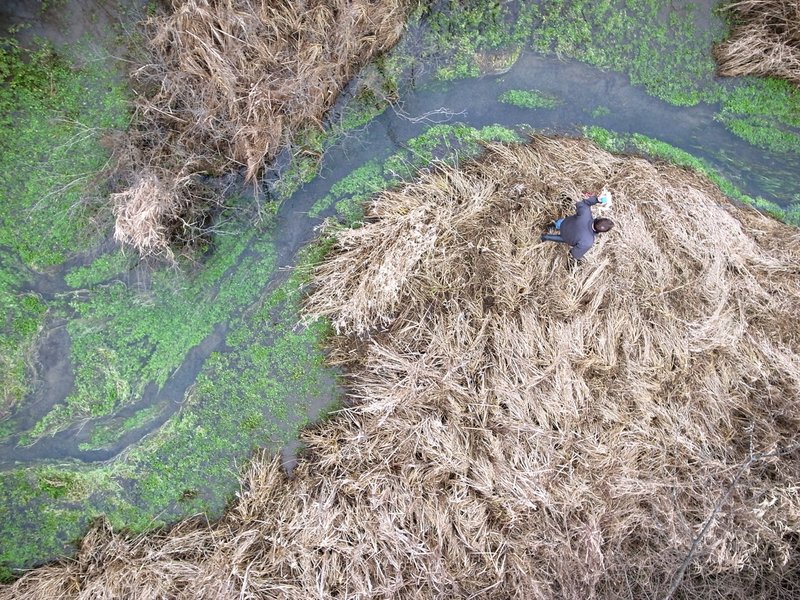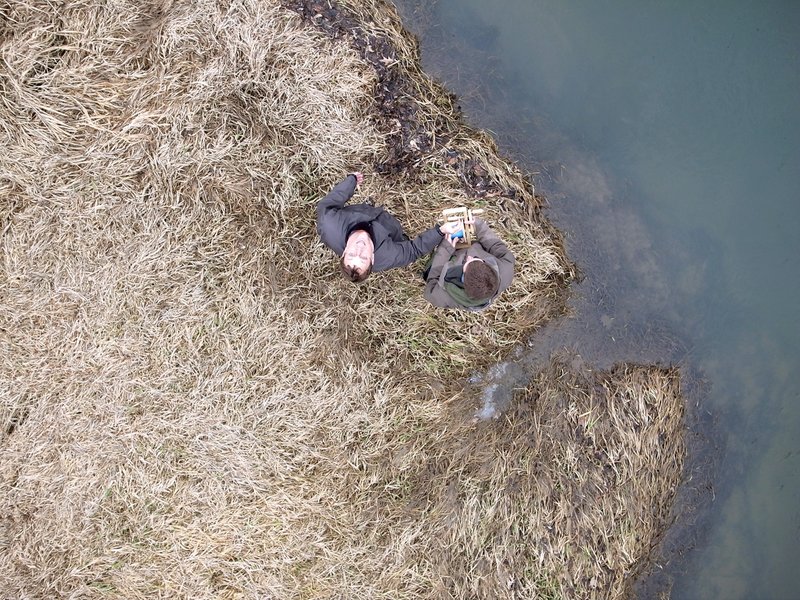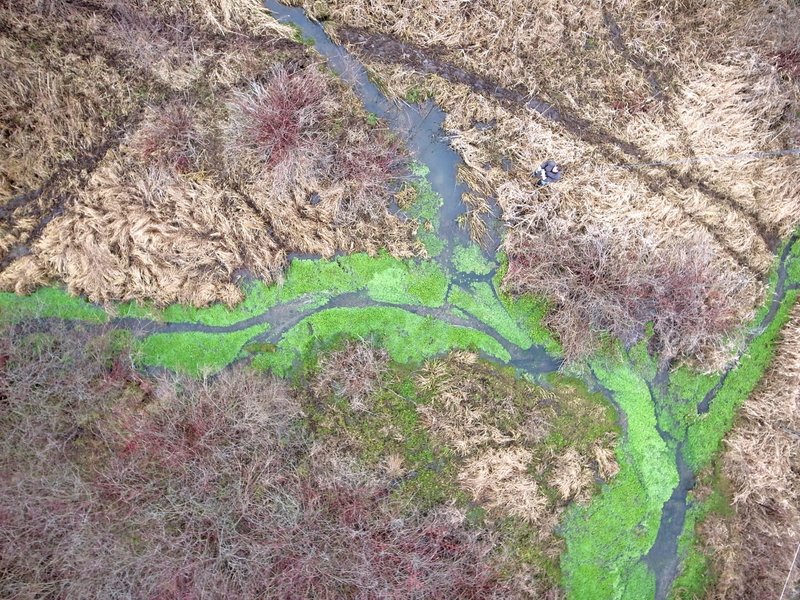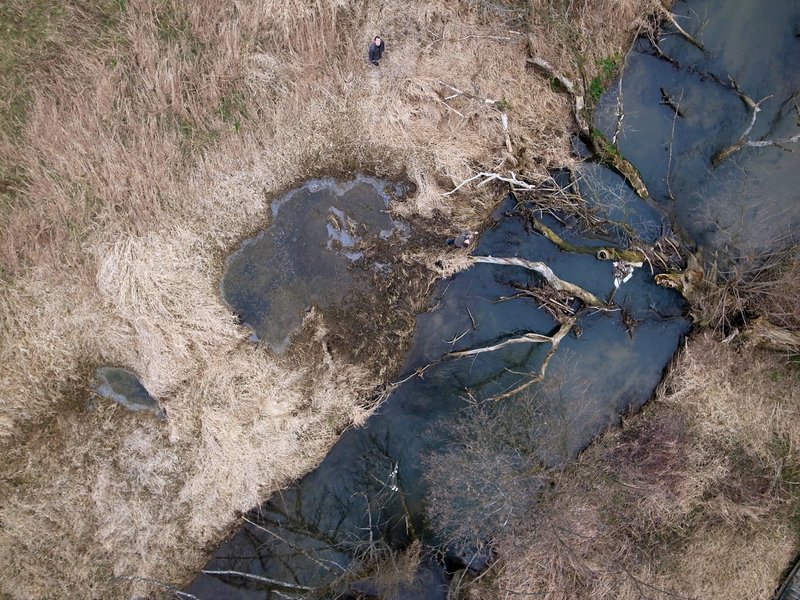Thanks for the good feedback, questions and kind comments. A few things:
- I had placed an example of the 'mosaic' stitched version of these images -- I call them 'helipans' -- in the "Guess What it Is" forum. For a quick link to the GigaPan.org website where 5 or 6 helipans are lodged, go to that website and enter "helipan" into the search box.
- Petach: stability isn't really an issue. Only about 1 out of 10 shots, let's say, is a little blurry when there's a gust of wind and the helikite wobbles, or I jerk the line. I do avoid gusty days; a steady light wind, or no wind at all, is best. And the GRDIII is wonderful and sharp; the 1.9 lens means one can keep a fairly fast shutter speed even on overcast winter days, as on the day I took the images above. I do tweak the exposure and levels a bit to brighten, but there's no problem with sharpness.
- Quester: both single vantage point 'panning' and 'towing' work for different applications. Generally, I like a combination of the two: tow the helikite to a good vantage point, stop, sort of wobble it a little so that it pans, then move to the next spot, ensuring 30-40% overlap, then stop and pan a bit more. Constant towing is less reliable because it can result in gaps where the one or two photos needed to ensure good overlap happen to be fuzzy because you're walking along a bumpy landscape and jerking the line. Also, yes, I have done some earlier helikiting on ag. lands, but with an older Konica/Minolta point-and-shoot (lousy camera). I haven't done any real agricultural analysis -- more just orientation, reconnaissance and outreach communication.
I'll check my cache and see if there might be a few more interesting photos worth posting.
Ken






